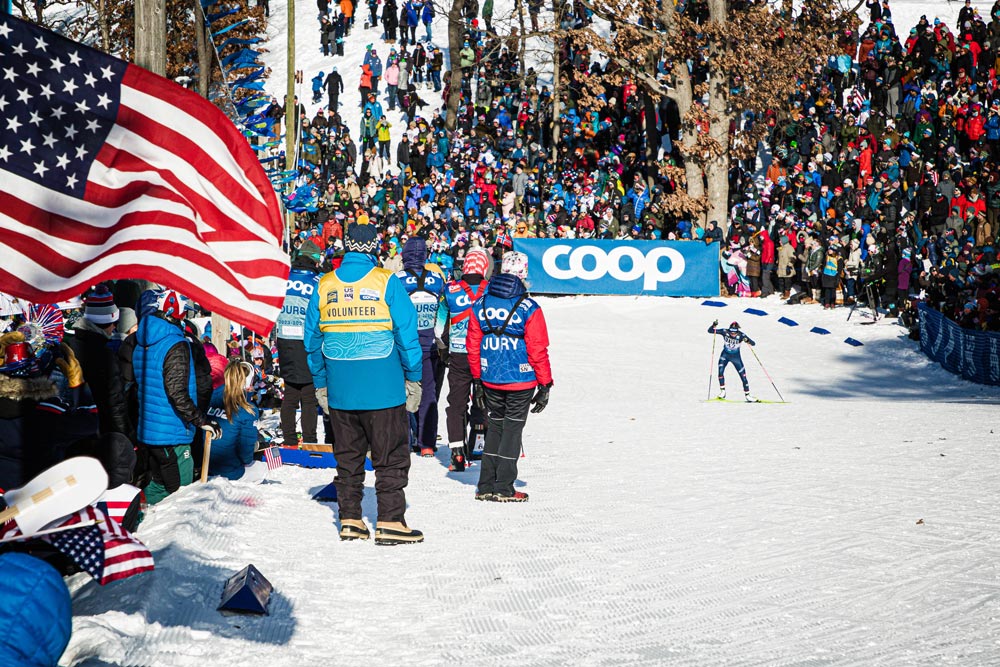
As the first day of the Stifel Loppet Cup dawned, with women’s and men’s sprints on the horizon, several questions hung in the air: Will the Swedish women continue their utter dominance of the discipline? Will Johannes Hoesflot Klaebo of Norway similarly lay waste to the men’s field and notch his 101st career victory? And, of course, how will this American team fare in its first-ever World Cup competition at home?
Morning temperatures hovered at about 16 degrees F for the 10 a.m. start, accompanied by a stout, consistent west wind. The recent snowfall remained intact, and the course was immaculately prepared. Despite the cold temps, qualifiers turned in very respectable times.
The quality of racing and the level of competition was on par with any other World Cup event. The women’s final did, in fact, result in another Scandinavian sweep, with Jonna Sundling (Sweden) grabbing the win with a time of 3:10.17. Her teammate, and fastest qualifier of the day, Linn Svahn trailed in second place at 3:14.99, and Kristine Stavas Skistad of Norway came in third at 3:18.17. The outcome could have been even more lopsided had the third Swedish woman in the final, Emma Ribom, not tangled with Victoria Carl of Germany, losing considerable ground and becoming a non-factor.
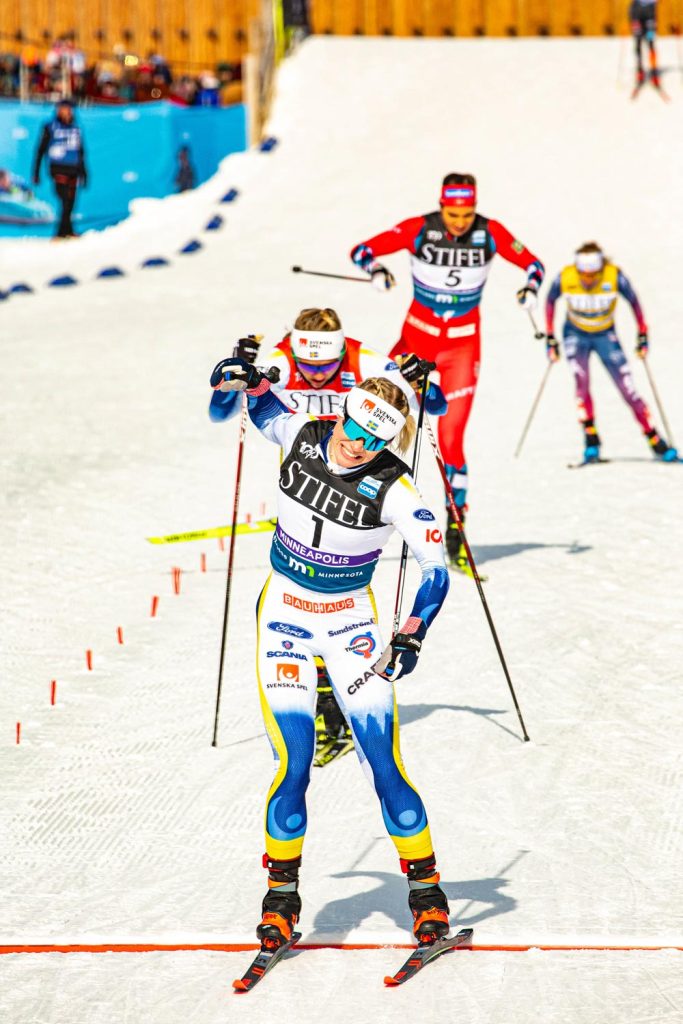
Jessie Diggins hit the line in fourth—not the result her hometown fans were hoping for, but an outcome that she was undaunted by. “That was such a fair, fast and firm course, it was beautiful,” she said afterward. “I just wanted to get out there and be able to do it all four times.”
“The chanting at the start was pretty rad,” she continued. “We thought we might not hear the start gun,” she joked. “And you know, I didn’t care, this is so cool and amazing. I was just full of adrenaline. It was this massive wall of sound—the loudest I have ever heard on a ski course in my life.”
Commenting on the overall experience and this momentous occasion, Diggins underscored the significance of this event. “Nothing will be like this ever again, even if we get a World Cup back in this country, which I hope we do, nothing is ever going to feel like this again. So I’m just enjoying it as much as I can.”
Even though she did not place, race organizers allowed her to take a victory lap of sorts, skiing the length of the stadium and high-fiving spectators, as they expressed their appreciation for her efforts and passion for the sport.
In the men’s sprint, Klaebo did indeed notch yet another victory. Italian Federico Pellegrino came in, second besting Klaebo’s teammate Haavard Solaas Taugboel in third.
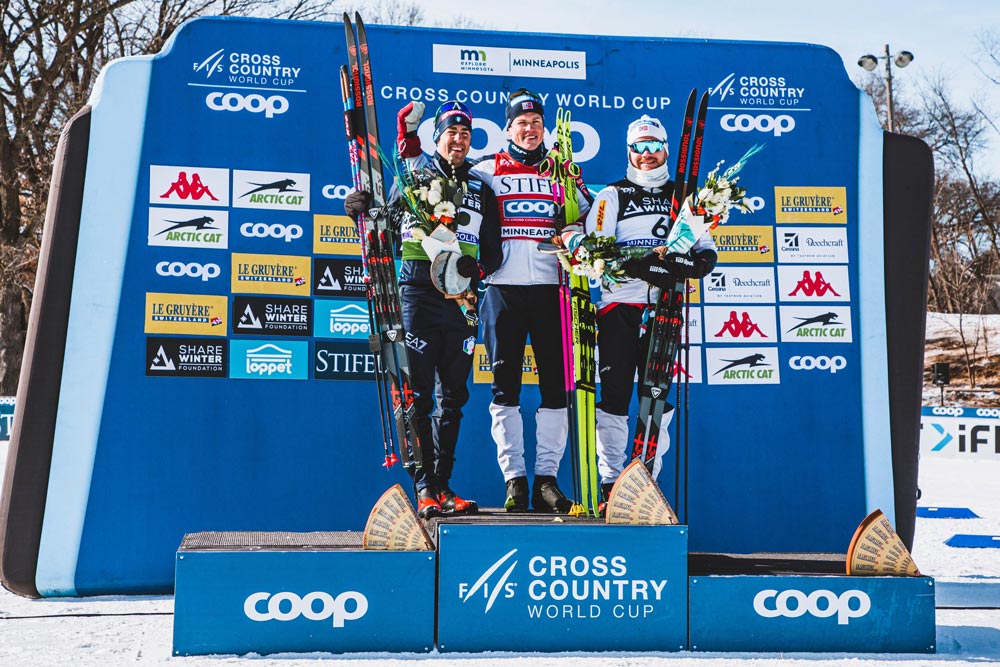
The U.S. team fielded a hefty roster of 23 skiers for the individual qualifiers. They put in a valiant effort, advancing four men and four women to the heats. Diggins was joined by Rosie Brennan, Julia Kern and Sammy Smith. Gus Schumacher was the top U.S. men’s qualifier, ahead of JC Schoonmaker, Kevin Bolger and Zak Ketterson.
Diggins showed early on that she came to play, aggressively attacking the course during her qualifier and laying down the early time to beat, which ultimately was the second-fastest qualifier time. She carried this same strategy through the quarter- and semi-final rounds, taking the lead from the start and pushing the pace throughout the race to win both stages. “I definitely might have made myself a little tired for the finals, but I just wanted to get to do this four times so badly, I just blasted through my quarter and semi, and didn’t really care,” she said. No other Americans moved on to the semi-finals.
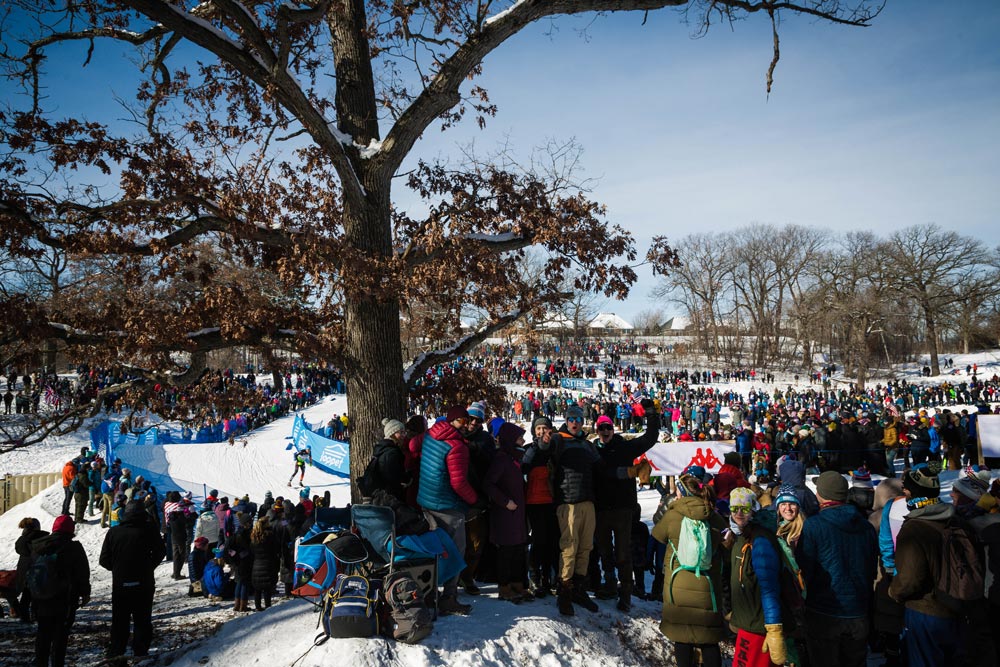
The race venue did not disappoint; its intimate, meandering course afforded numerous viewpoints. And the Minneapolis fan base lived up to the pre-race hype, lining the 1.5 km sprint course at least six and often up to 12 or more deep. Race fans would yo-yo from one location to another and back as the racing progressed. Spectators only had to follow the roar of the crowd to tell where the competitors were on the course. The excitement and emotional investment throughout the venue was palpable. Said Diggins, “Even during our warm-ups an hour before the qualifiers, there were already 5,000 people on the course. It was the probably the best atmosphere we’ve had the entire season.”
This is not the first iteration of the Minneapolis World Cup. Originally scheduled for March 2020, the event fell victim to the oncoming pandemic. Over two years of planning was flushed down the drain, but it was not a total loss. Though now in the charge of a mostly new organizing team, many of the event’s “bones,” including snowmaking and course layouts, could largely be transposed to the current version. Plus, a spiffy new trailhead building and other infrastructure now comprise a world-class Nordic skiing facility at the World Cup venue, Theodore Wirth Park. Thanks to the tenacity of the Loppet Foundation; awesome community, corporate and municipal support; and the persistence of Jessie Diggins and friends, the 2024 Stifel Loppet Cup became a reality.
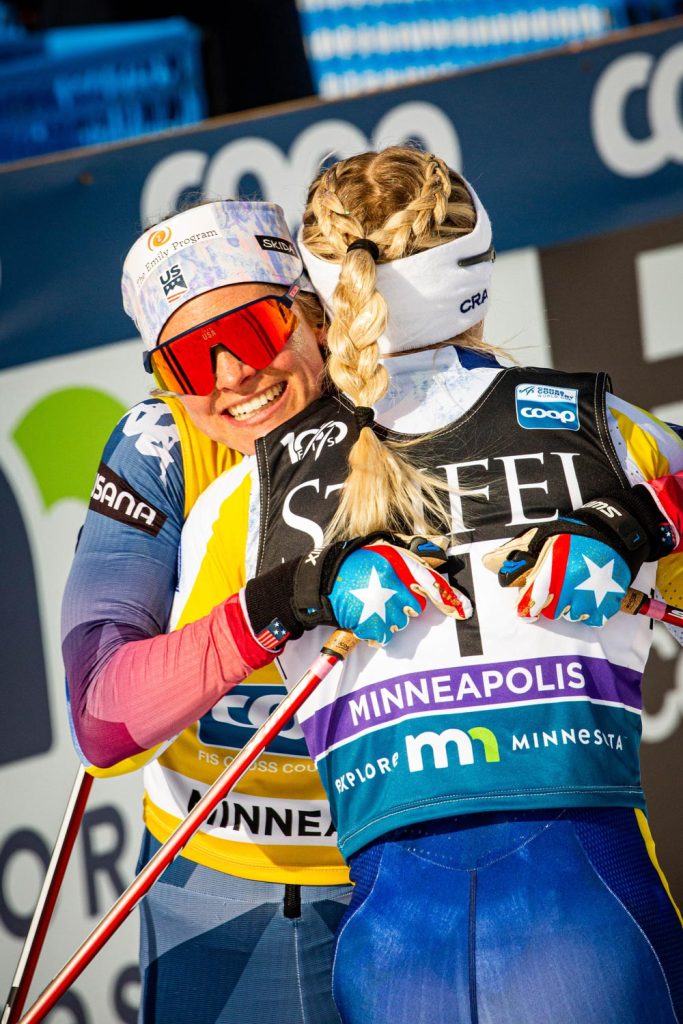
Diggins summed up the day’s experience by reflecting on some of her earlier teammates, including Andy Newell, Holly Brooks and Hailey Swirbul, who were all in attendance. “There are so many athletes who I wish had gotten a chance to do this. They were the people ahead of us, paving the way. And they are still here. It was just so special to get to share this with these athletes who have been such a big part of my life. This was for them, too.”
Her final reflection aptly summed up the day. “This was so special—the whole country showed up. I cried a lot today, but for all the right reasons.”